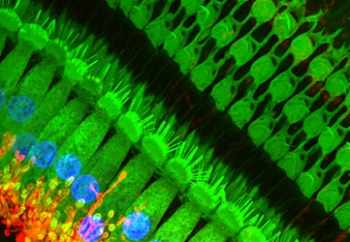Hair cell offers easy way to make patient-specific heart cells for disease modelling
 Washington, Aug 30 : A study has suggested that hair follicle keratinocytes offer a simple and accessible route to generate patient-specific induced pluripotent stem cells, iPSCs, with minimum inconvenience for the patients.
Washington, Aug 30 : A study has suggested that hair follicle keratinocytes offer a simple and accessible route to generate patient-specific induced pluripotent stem cells, iPSCs, with minimum inconvenience for the patients.
"Data gathered in this study demonstrates an easy and fast possibility to generate iPSCs from hair follicles of patients with genetic cardiac diseases and their further differentiation into functional cardiomyocytes," said Dr. Katrin Streckfuss-Boemeke from Germany, who won the ESC Basic Science Young Investigators Award.
"These cells will allow us to model the heart disease of these patients, to investigate the mechanisms of the disease, to perform drug screenings and to develop patient-specific therapeutic strategies," Streckfuss-Boemeke explained.
The aim of this study was to use an alternative cell source that could be readily and non-invasively isolated from patients and which shows a high proliferation rate for efficient reprogramming.
Pluripotent stem cells have two major properties: they can proliferate indefinitely and they can form about 220 different cell types present in the adult body, including functional cardiomyocytes.
Lately, the reprogramming of somatic cells to induced pluripotent stem cells (so called iPSCs) has become very popular. For the pluripotency induction, proteins (e. g. the pluripotency factors Oct4, Sox2, Nanog, Lin28 Klf4, and cMyc) are introduced into the cells.
Therefore, human iPSC cells offer the particularly attractive opportunity to convert somatic cells from patients with cardiac disease into iPSCs and differentiate these iPSCs into patient-specific cardiomyocytes.
In this way we can establish a human heart disease model for analysing molecular mechanisms and developing individual therapy strategies.
This would not be possible by using heart biopsies from living patients, because of limitation regarding the procedure and the amount of the taken tissues.
The study was presented at the ESC Congress 2011. (ANI)